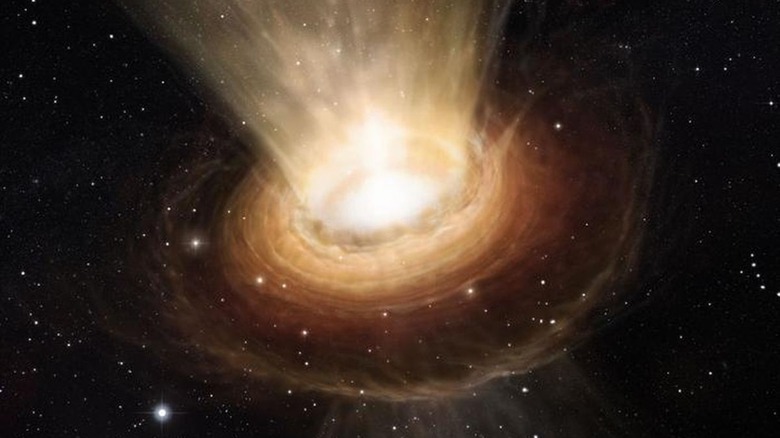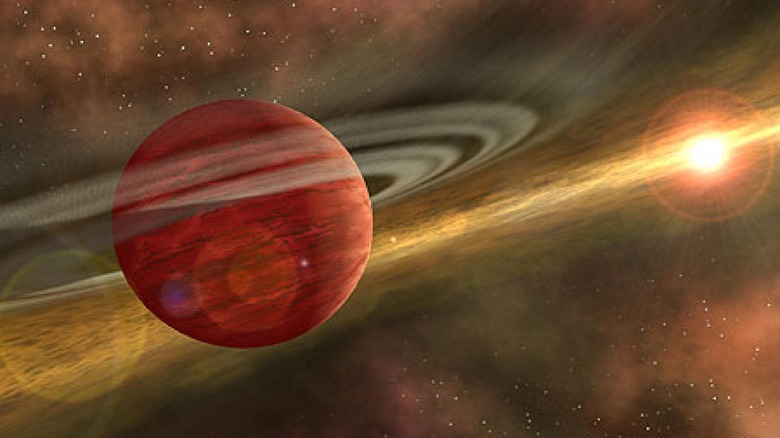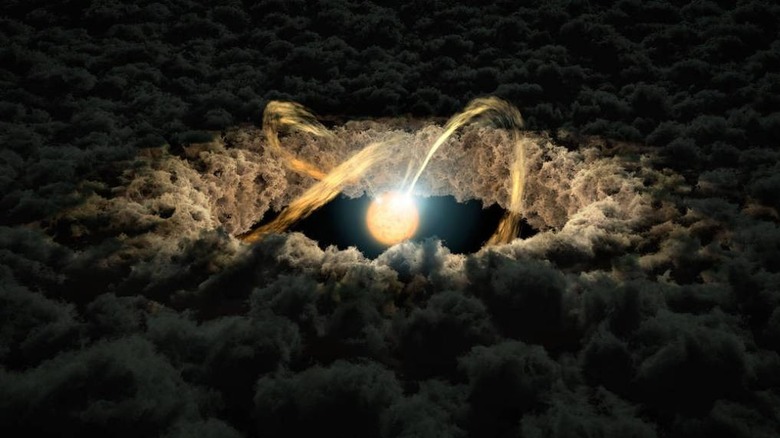The Incredible Way That Wind Forms Planets
Scientists understand the basic process by which planets are formed: a disk of dust and gas swirls around a star, and small knots form due to perturbations. These knots attract more material and become clumps, gradually growing over time as more and more dust and gas is attracted to them due to gravity. Eventually, enough material is present that the material sticks together into a core, forming the basis of a new planet.
However, the exact details of this process are something we're still learning about. Recently, researchers using the James Webb Space Telescope (JWST) have uncovered information about the surprising importance of winds in planetary formation.
In a new study in The Astronomical Journal, researchers studied a disk of material around a star, called a circumstellar disk, that was in the process of forming planets. They were trying to understand why these disks start out with so much gas, but lose this gas over time to leave behind more solid matter.
They looked at how this gas disperses from a forming planetary system, which was actively happening around this particular star.
"Knowing when the gas disperses is important as it gives us a better idea of how much time gaseous planets have to consume the gas from their surroundings," said lead author of the study, Naman Bajaj of the University of Arizona. "With unprecedented glimpses into these disks surrounding young stars, the birthplaces of planets, JWST helps us uncover how planets form."
Blowing material away
The star the researchers were looking at is called T Cha, and is relatively young by stellar standards. It has a circumstellar disk of material around it, but this disk has an unusual feature — a huge gap of dust, stretching 30 times the distance between the Earth and the sun.
As the gas leaves the disk, it is referred to as a disk wind. Using James Webb, the researchers were able to image this disk wind for the first time. They observed two chemicals in particular, neon and argon, and saw how the wind moved through the disk of material around the star.
"The neon signature in our images tells us that the disk wind is coming from an extended region away from the disk," Bajaj said. "These winds could be driven either by high-energy photons – essentially the light streaming from the star – or by the magnetic field that weaves through the planet-forming disk."
This is important because it is this wind which dictates how much material is left in the disk, and whether it is more solid (and likely to form a rocky planet like Earth or Mars) or gas (and likely to form a gas giant like Jupiter or Saturn).
"So, in short, the outcome of planet formation depends on the evolution and dispersal of the disk," Bajaj said.
Changes underway
Having observed these winds, the researchers then wanted to know whether they were caused by the light from the star or by the magnetic fields within the disk. To investigate this, the researchers used computer simulations to see what the effects of bright light streaming off a young star would be on a matter disk, and found that the results looked similar to what they saw in the T Cha system.
That suggests that it could be the star's light which is driving the winds — and they are powerful enough to move large amounts of gas. In fact, the researchers estimate that the winds are driving away an amount of gas equivalent to the mass of our moon every year.
They found that the disk around T Cha was changing rapidly. While most astronomical phenomena are measured in the order of thousands or millions of years, this particular system has already changed since previous observations in 2007.
"Along with the other studies, this also hints that the disk of T Cha is at the end of its evolution," said researcher Chengyan Xie of University of Arizona. "We might be able to witness the dispersal of all the dust mass in T Cha's inner disk within our lifetime."


